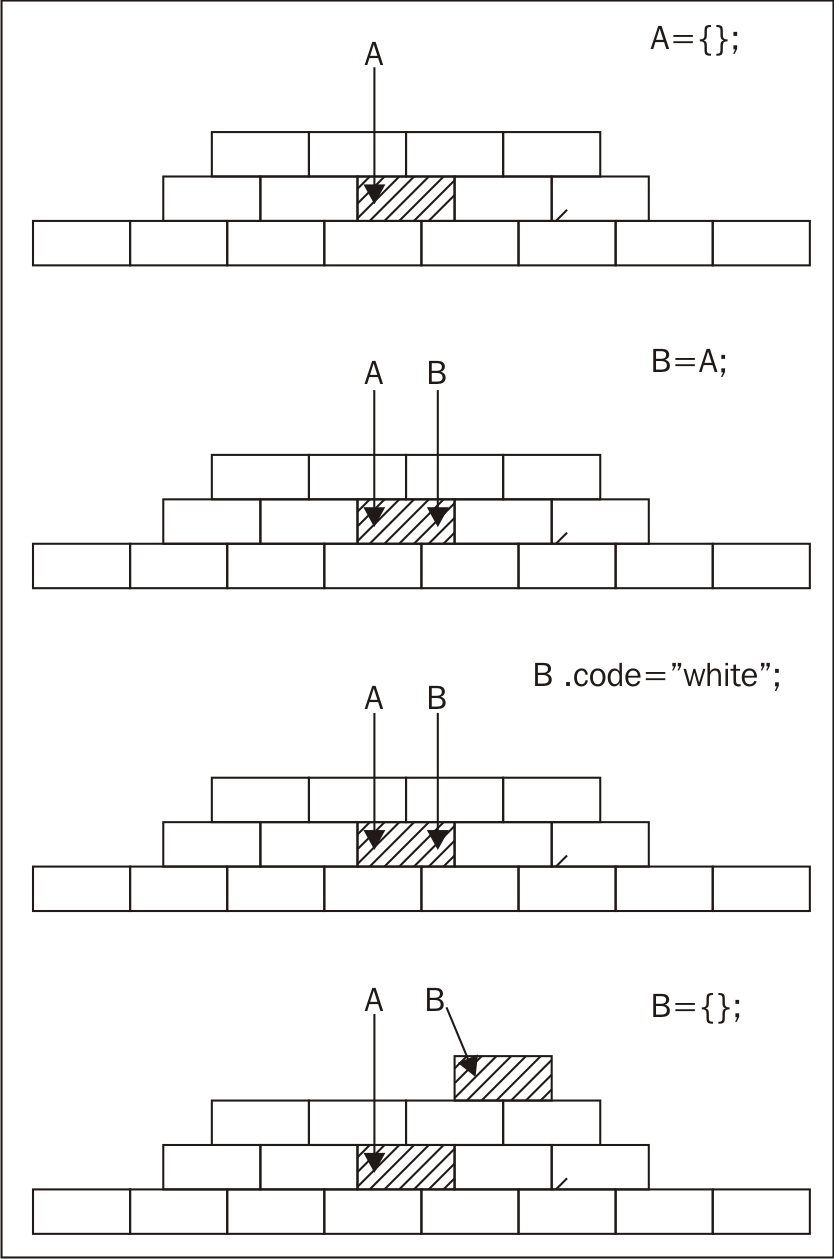The fact that objects (including functions and arrays) are copied by reference could sometimes lead to results you don't expect.
Let's create two constructor functions and add properties to the prototype of the first one:
> function Papa() {}
>function Wee() {}
>Papa.prototype.name = 'Bear';
>Papa.prototype.owns = ["porridge", "chair", "bed"];
Now, let's have Wee inherit from Papa (either extend() or extend2() will do):
>extend2(Wee, Papa);
Using extend2(), the Wee function's prototype inherited the properties of Papa.prototype as its own:
>Wee.prototype.hasOwnProperty('name'),
true
>Wee.prototype.hasOwnProperty('owns'),
true
The name property is primitive, so a new copy of it is created. The owns property is an array object, so it's copied by reference:
>Wee.prototype.owns;
["porridge", "chair", "bed"]
>Wee.prototype.owns=== Papa.prototype.owns;
true
Changing the Wee function's copy of name doesn't affect Papa:
>Wee.prototype.name += ', Little Bear';
"Bear, Little Bear"
>Papa.prototype.name;
"Bear"
Changing the Wee function's owns property, however, affects Papa, because both properties point to the same array in memory:
>Wee.prototype.owns.pop();
"bed"
>Papa.prototype.owns;
["porridge", "chair"]
It's a different story when you completely overwrite the Wee function's copy of owns with another object (as opposed to modifying the existing one). In this case, Papa.owns keeps pointing to the old object, while Wee.owns points to a new one:
>Wee.prototype.owns= ["empty bowl", "broken chair"];
>Papa.prototype.owns.push('bed'),
>Papa.prototype.owns;
["porridge", "chair", "bed"]
Think of an object as something that is created and stored in a physical location in memory. Variables and properties merely point to this location, so when you assign a brand new object to Wee.prototype.owns, you essentially say-Hey, forget about this other old object, move your pointer to this new one instead.
The following diagram illustrates what happens if you imagine the memory being a heap of objects (like a wall of bricks) and you point to (refer to) some of these objects:
- A new object is created, and A points to it.
- A new variable B is created and made equal to A, meaning it now points to the same place A is pointing to.
- A property color is changed using the B handle (pointer). The brick is now white. A check for
A.color === "white"would be true. - A new object is created, and the B variable/pointer is recycled to point to that new object. A and B are now pointing to different parts of the memory pile. They have nothing in common and changes to one of them don't affect the other:

If you want to address the problem that objects are copied by reference, consider a deep copy, described later in the chapter.
